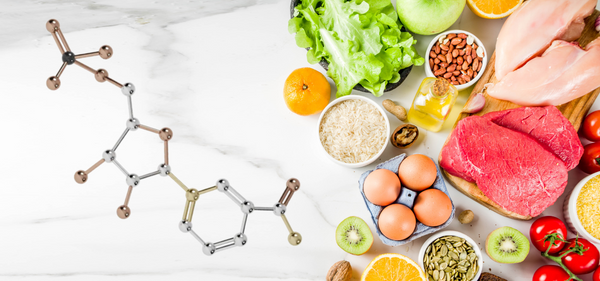NUTRITIONAL RECOMMENDATIONS FOR ENDURANCE ATHLETES

We sometimes get asked for advice on what to eat and how much. The question is mostly along the lines of “I’m new to running/cycling/triathlon/swimming – how much carbs/protein/fat should I eat?”
Frustratingly, the answer always starts with “It depends”. If you think we’re just avoiding answering the question, do a google search for “nutritional recommendations for endurance athletes” and you’ll be presented with over 1.6 million search results.
Without a detailed individual consultation – best done with a qualified nutritionist – it is not possible to answer the question with specifics. We are all at different levels of fitness, different body composition, different training levels, different general health issues – it truly does depend.
The purpose of this article is to give you some simple guidelines and tools with which you can start to answer the question for yourself.
PERCENTAGE
Most of the recommendations focus on the percentage of energy (Calories) consumed through carbs, protein and fat. Because there are so many variables the recommendations tend to be equally varied.
Despite ignoring any fad diets we still found a wide range of recommendations as follows:
Carbohydrate 45-65%
Protein 15-20%
Fat 20-35%
So how do we get closer to the answer for our specific case?

These percentage ranges have their uses – especially if you know what your own percentage breakdown is. You can use a calorie counter app to help you work this out. By keeping a diary across a typical week or better still a month, we can get a good bench mark for where we sit within these ranges. We found five that can do the job.
- http://www.caloriecount.com
- http://www.acaloriecounter.com
- http://www.fatsecret.co.uk
- https://www.my-calorie-counter.com
- https://www.myfitnesspal.com
Most of the apps will give you a chart similar to the example from Myfitnesspal shown.
Armed with this knowledge we can then think about our own situation and apply some common sense to determine whether we are eating the right balance. Some points to bear in mind:
– a period of heavy training would see you drift towards the higher end of the Carbs %, most likely at the expense of Fat.
– if fat reduction is your current training goal than of course a reduction in fat intake coupled with the correct exercise intensity should help you reduce your % body fat. However, once you reach your target don’t be afraid to bring the fat contribution back up to normal. Fat provides energy and many essential micro-nutrients for endurance athletes.
– Protein is sometimes promoted as a fuel source although in reality it’s the bodies least favourite fuel source. In situations where there aren’t enough carbs or fat reserves available, the body will break down protein as fuel – but this isn’t ideal. It’s primary purpose is in supplying the branch-chain amino acids that underpin most of the bodies essential cell production processes including muscle maintenance and repair.
– Older athletes in particular should generally avoid reducing protein below the recommended limits as research shows that we have a higher % protein requirement over our younger colleagues.
Total Energy In & Out
While a percentage measure will tell you if you are eating the right proportions of fat, carbs and protein, you need to think about the correct overall energy intake to get the full picture.
For an average person – with little or no sporting activity in their lifestyle – total energy intake is recommended as 2200 kcal per day for men and 1800 kcal per day for women. Take up some exercise and it rises quickly to between 2,400-2,800 kcal for moderately active men and 2,000-2,200 kcal for moderately active women. While 6,000 kcal per day is not unusual for an Olympic standard endurance athlete.
Again these ranges are useful if we have a sense of our own activity level and calorie intake. Your calorie counter (above) will give you a sense of what total energy you take in, while most Garmin-like or Strava measurement apps will give you an estimation of your total energy expenditure during your work outs. As a rough measure of your output – or calorie needs – simply add these sessions to our average lazy mates recommended daily as noted above.
With this basic info you can start to think about whether your diet reflects your training needs in a general sense.
Final Thought
It’s also worth noting that an athletes diet can’t just be all about Carbs, Protein and Fats. In a previous article Food For Sport we highlight the fact that there are important micro nutrients available from a range of foods that may not in themselves provide much by way of “energy”. The food pyramid is a good guide to adding variety to your diet. There is a reason most diet or health products say “eat as part of a balanced and varied diet”. It’s true!
References
Australian Institute of Sport – Current concepts in sports nutrition.
Burke L. and Deakin V. (2006) Clinical sport nutrition: Nutrition and the ageing athletes. McGraw-Hill Third edition 18:633-643
Campbell WW. And Geik RA. (2014) Nutritional considerations for the older athlete. Nutrition 20:603-608
Phillips S. (2012) Dietary protein requirements and adaptative advantages in athletes. British Journal of Nutrition 108 (2):158-167
Potgieter S. (2013) Sport nutrition: A review of the latest guidelines for exercise and sport nutrition from the American College of Sport Nutrition, the International Olympic Committee and the International Society for Sports Nutrition. S Afr J Clin Nutr.:ISSN 26(1):6-16
Richard R. (2014) Sports nutrition, macronutrient intake according to the type of sport. Nutr clin métab. 28(4): 272-278
Rodriguez NN., DiMarco NM. and Langley S. (2009) Position of the American Dietetic Association, Dietitians of Canada, and the American College of Sports Medicine: Nutrition and athletic performance. J Am Diet Assoc. 109(3):509-527
Rosenbloom CA. and Dunaway A. (2007) Nutrition recommendations for masters athletes. Clin Sports Med 26:91-100
About Elivar
Elivar – Sports Nutrition optimised for athletes over 35 year old. Our bodies change as we age, so should our sports nutrition. Try our Weekend Endurance Pack – fuel a weekend’s training with a selection of our Endure, Recover and Hydrate products for only £12.99 Try Now
Also in News

Elivar's Sustain Go! Energy Gels Fuelling BigFeat Events' Success
BigFeat Events, recognized for orchestrating captivating endurance events, stands out for its dynamic blend of cycling and running sportives. The recent "Beast to the East" cycling sportive, held on May 21st, is a sterling example of their commitment to crafting exhilarating experiences. A cornerstone of the success and popularity of these events has been the provision of Sustain Go! energy gels, generously sponsored by Elivar.
Previous running and events such as the "Bigwayround Trail Run" and "BigSea Trail Run" also benefited from the free distribution of Sustain Go! energy gels, much to the participants' delight. The energy boost and quicker recovery offered by these gels have consistently been instrumental in empowering athletes to perform their best.

NMN: Boosting Your Health from the Kitchen to the Medicine Cabinet
Did you know that Nicotinamide Mononucleotide (NMN), the star ingredient in numerous anti-aging supplements, also moonlights in several foods you might already enjoy? It's true! NMN is a vital precursor to NAD+, a molecule crucial to many biological processes, like cell growth, DNA repair, and metabolism. But as we age, NAD+ levels take a hit, and bolstering them through NMN intake can be beneficial. Now the question arises, can we simply count on our daily meals for our NMN fix?

